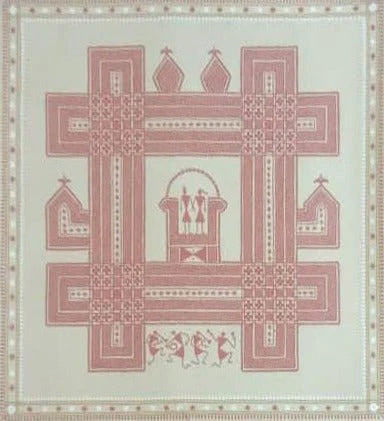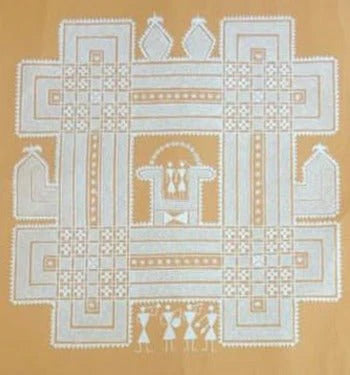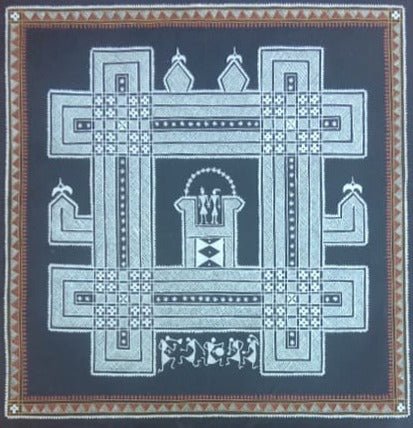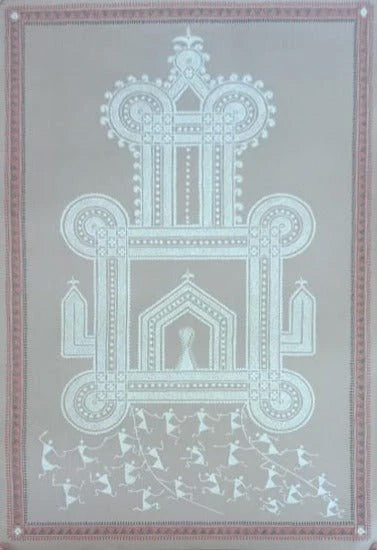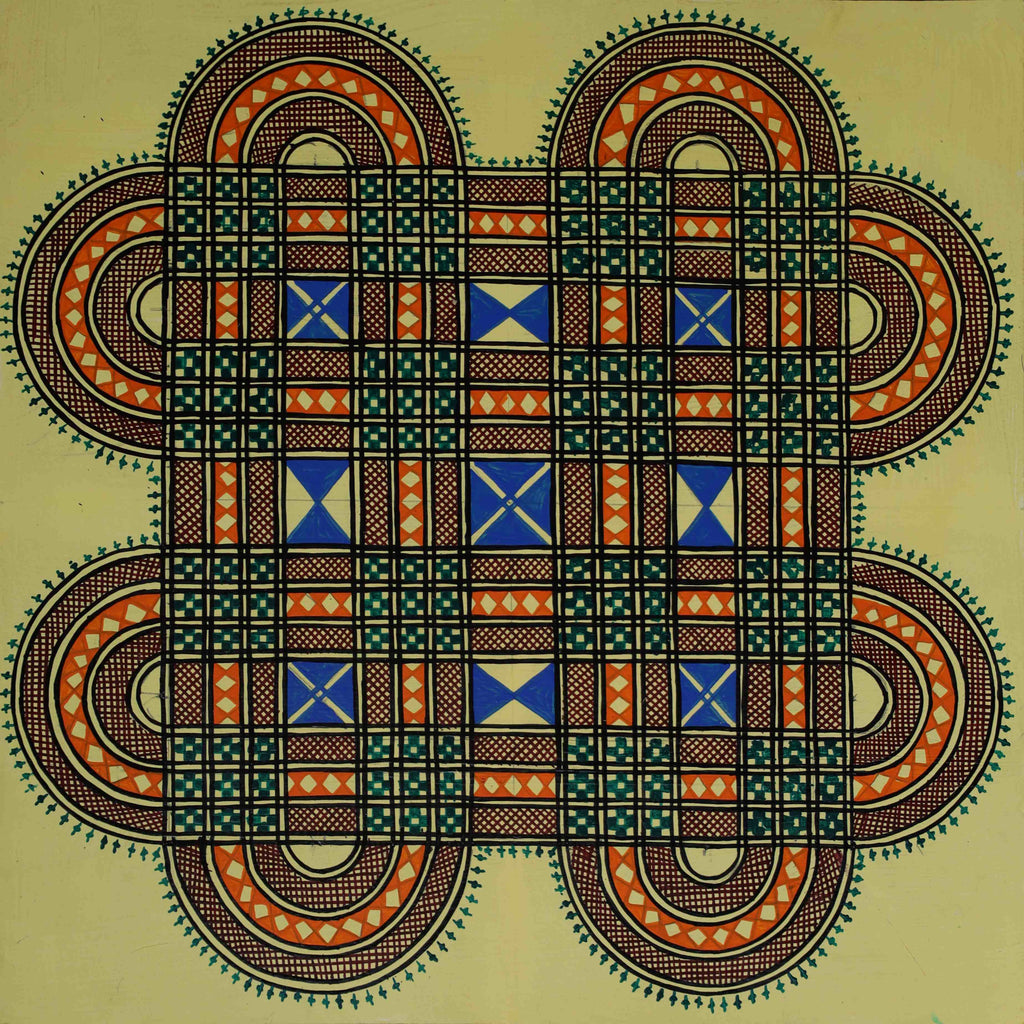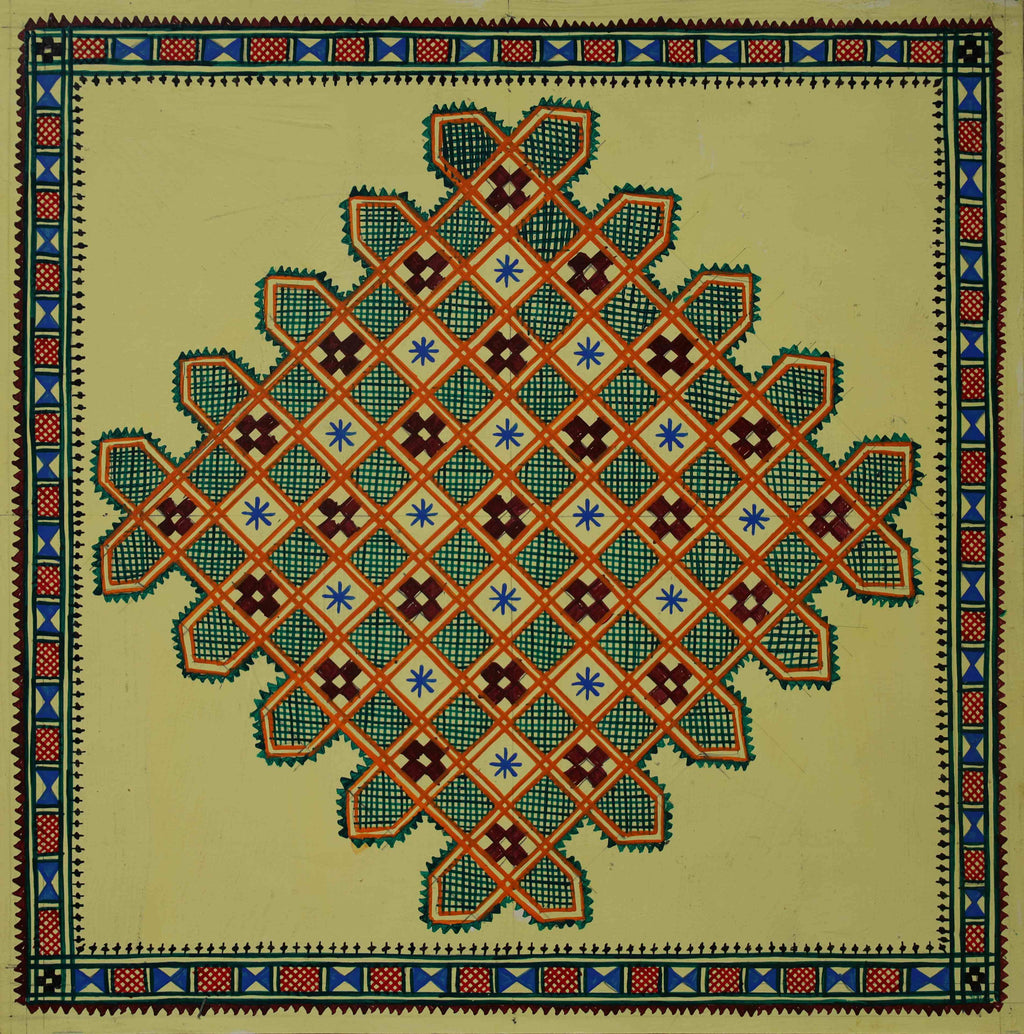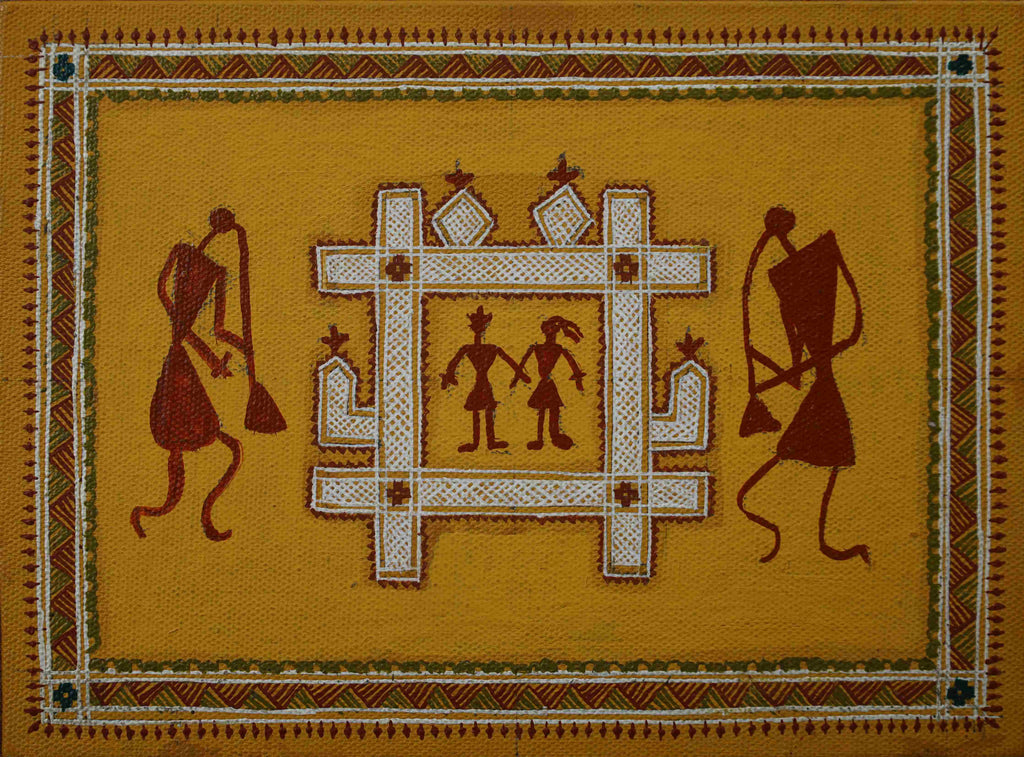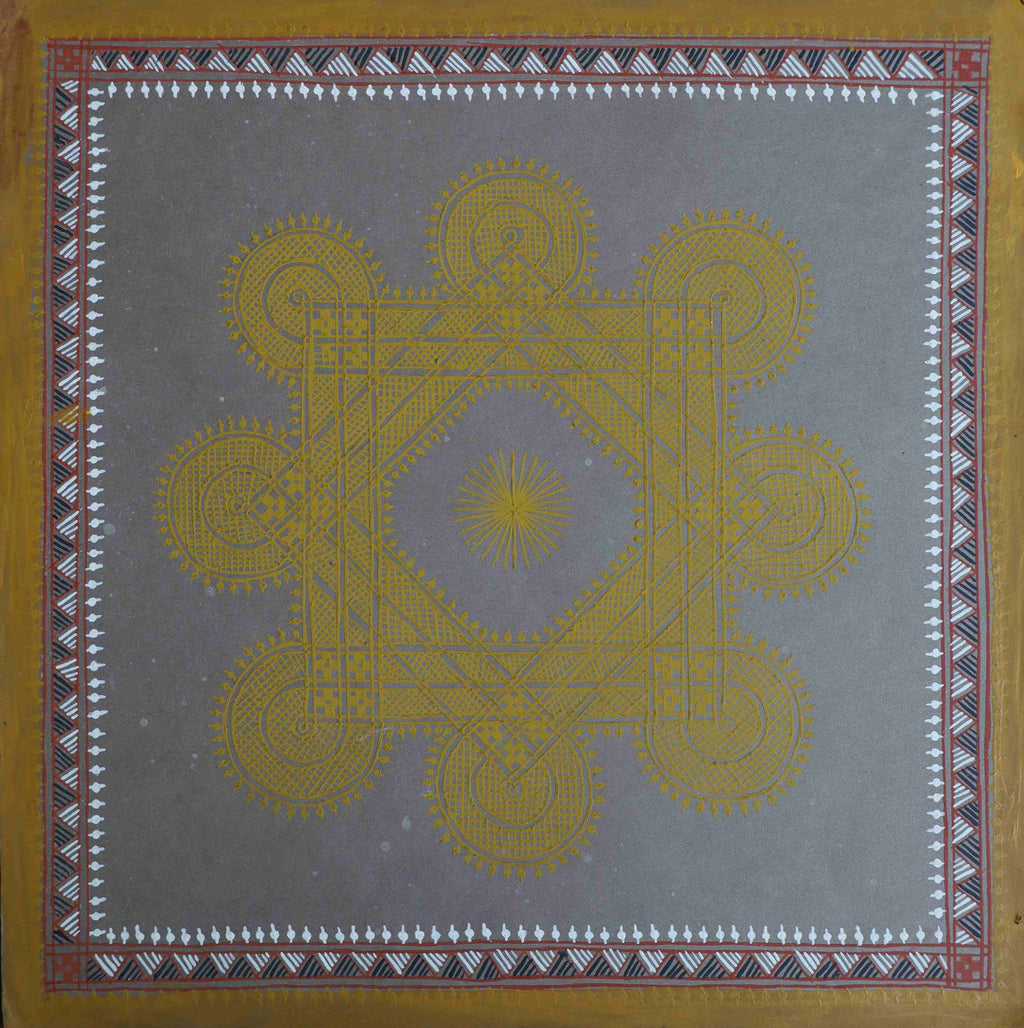Explore the beauty of Chittara art, a traditional tribal art form from the Deevaru community in the Sagara region of Karnataka. Celebrated for its geometric precision, eco-friendly materials, and deep symbolism, Chittara painting reflects the soul of the tribal art of Karnataka.
At MeMeraki, we bring this exquisite Karnataka folk art painting to life through curated artworks, handcrafted by master artists who preserve the legacy of hase Chittara—a timeless celebration of nature, life, and the divine.
What is Chittara Art?
Chittara art of Karnataka is a ceremonial painting style traditionally created by the women of the Deevaru tribal community. Using red mud walls as canvas and rice paste as paint, the artwork is typically drawn during festivals, weddings, and agricultural rituals to invoke prosperity, fertility, and divine blessings.
Known for their symmetrical motifs and intricate grids, Chittara art designs are deeply rooted in everyday life, nature, and spiritual beliefs.
Origins and Cultural Significance
Passed down through generations, Chittara painting has long served as a visual language of ritual and identity for the Deevaru people. Each line and motif represents a connection to nature—the moon, stars, flora, fauna—and community life, such as farming or marriage celebrations.
These visual elements are not merely decorative; they act as sacred symbols of protection, prosperity, and cosmic balance—making hase Chittara art a spiritual as well as aesthetic practice.
Chittara Art Designs and Motifs
Inspired by nature and everyday life, Chittara designs are composed of intricate geometric shapes—triangles, grids, dots, and diagonals. Common themes include:
-
Animals and birds – cows, peacocks, and elephants
-
Natural elements – sun, moon, trees, stars
-
Ritual scenes – marriage processions, sowing, festivals
-
Symbols of fertility, harmony, and balance
These motifs are carefully arranged to represent harmony in the universe, drawing on ancient knowledge systems preserved through Karnataka Chittara art.
Materials and Making Process
Chittara art is created using 100% natural, eco-friendly materials, staying true to its indigenous roots:
-
Base wall or board: Coated with a mix of red laterite soil and cow dung
-
White: Rice paste
-
Red: Laterite soil
-
Black: Charcoal
-
Yellow: Turmeric paste
-
Brushes: Made from Areca nut tree sticks, frayed to form fine tips
Each piece reflects the artist’s years of practice and generational wisdom, passed on from mother to daughter.
Why Choose Chittara Art from MeMeraki?
-
Authentic tribal art of Karnataka directly from artisan communities
-
Unique and handmade Chittara paintings on canvas, boards, and cloth
- Eco-friendly and non-toxic art using natural pigments
- Perfect for home decor, festive gifting, and cultural collectors
-
Empowering tribal women artisans and preserving India’s intangible heritage
Add a piece of Hase Chittara art to your home and bring stories of nature, community, and cosmic balance into your space.
Featured Artists
-
(Optional Placeholder) – Highlight any specific Chittara artists featured on MeMeraki (can be added later once available)
FAQs – Chittara Art at MeMeraki
Q1. What makes Chittara art unique among Indian folk paintings?
Chittara art is defined by its precision, symmetry, and spiritual symbolism. Unlike colorful folk arts like Madhubani, it uses a restricted palette of natural, earthy colors, reflecting the harmony of the natural world.
Q2. Is the color in Chittara paintings safe and eco-friendly?
Yes, all colors in Chittara paintings are non-toxic and derived from nature—rice paste, charcoal, turmeric, and laterite soil—making them completely safe and sustainable.
Q3. Can Chittara artwork be used in modern home decor?
Absolutely! The minimalist geometric patterns of Chittara art beautifully complement both traditional and contemporary interiors. Choose from framed paintings, wall panels, or scrolls that bring warmth and authenticity to any room.
Q4. Are custom sizes or designs available?
Yes, MeMeraki works with artists who can create custom Chittara art designs tailored to your space and aesthetic preferences.
Q5. Is Chittara the same as Hase Chittara?
Yes, Hase Chittara refers to the same art form, with “Hase” denoting the festive or ritualistic context in which it is practiced within the community.


